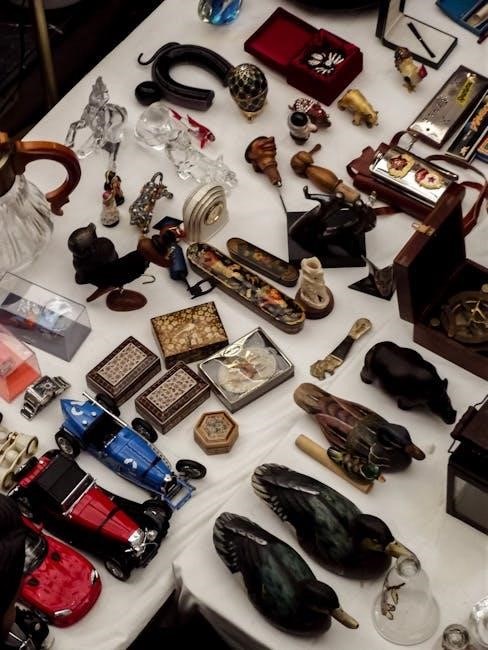Ping Putter Collector’s Guide

Welcome to the ultimate Ping putter collector’s guide! Generations have relied on these putters, and now a new generation of collectors is emerging. Whether you’re a seasoned enthusiast or just beginning, this guide will help you understand what makes Ping putters special and collectible.
Ping putters hold a special place in golf history, becoming highly sought-after collectibles, much like baseball cards. Driven by innovation and a commitment to quality, Ping revolutionized putter design, creating models that have won countless professional tournaments. This has fueled a vibrant collector’s market, with enthusiasts scouring yard sales, online marketplaces, and specialty shops in search of rare and valuable finds.
Collecting Ping putters is more than just acquiring golf equipment; it’s about preserving a legacy. Each putter tells a story, reflecting the evolution of golf technology and the changing landscape of the sport. The thrill of the hunt, the satisfaction of identifying a rare model, and the camaraderie among collectors make this a rewarding hobby.
This guide provides a comprehensive overview of Ping putter collecting, covering identification, dating, valuation, and resources. Whether you’re aiming to build a complete collection or simply seeking to understand the value of a putter you own, this is your starting point.
Identifying Ping Putter Models
Identifying Ping putter models is the first step in building a collection. Ping has produced a wide array of putters, each with unique characteristics. Key features to examine include the putter’s shape, head material, and any markings or engravings. The “Anser” model, for instance, is easily recognizable by its distinct design, while other models like the “B60” and various blade putters have their own specific profiles.
Pay close attention to the sole of the putter, as this often contains the model name and other identifying information. Also, examine the grip and shaft label, as these can provide clues about the putter’s era and specifications. Comparing your putter to online resources, collector guides, and vintage advertisements can help narrow down the possibilities.
Remember that variations within models exist, so consider subtle differences in head shape, weight pads, and stamp wording. Examining photos and detailed descriptions in collector guides is essential for accurate identification. Don’t hesitate to consult with experienced collectors or Ping experts to confirm your findings.

Dating Your Ping Putter
Dating your Ping putter is crucial for determining its value and historical significance. Several factors contribute to identifying the production year. The most straightforward method involves checking the serial number, typically located on the heel of the putter, just below the grip. Ping’s archives department can often provide information based on the serial number.
Another key indicator is the zip code on the putter. Putters with a zip code beginning with “850” were generally produced after 1966. Specific zip codes can further narrow down the production window. Observe the grip style and material, as these changed over time. Older putters often feature leather or wrapped grips, while newer models have synthetic grips.
Examine the head material. Early Ping putters were often made from bronze or beryllium copper (BeCu). Researching when specific materials were used can provide a date range. Comparing your putter to timelines of Ping putter releases and vintage advertisements can also help pinpoint its age. Remember that molds and designs evolved, so subtle differences can indicate specific production periods.
The Anser Putter: A Collector’s Icon
The Ping Anser putter stands as a true icon in golf history and a highly sought-after collectible. Introduced in 1966, the Anser revolutionized putter design with its heel-toe weighting and clean lines. Its impact on the game is undeniable, with countless professionals and amateurs alike relying on its performance. The Anser’s enduring popularity makes it a cornerstone of any serious Ping putter collection.
Several variations of the Anser exist, each with its own unique characteristics and collectibility. Early models, particularly those from the Scottsdale and Redwood City eras, are highly prized. Collectors seek out Ansers with specific stampings, materials (like bronze or BeCu), and original grips. The condition of the putter significantly affects its value, with pristine examples commanding top dollar.
Identifying subtle differences between Anser models requires careful examination. Details like the shape of the weight pads, the font used for the “Anser” name, and the presence of a zip code can all provide clues. The Anser remains a driving force in collectible clubs, representing a pivotal moment in golf equipment design. The Anser is not just a putter; it’s a piece of golfing history.
Rare and Valuable Ping Putters
The world of Ping putter collecting includes a realm of rare and valuable models that captivate serious collectors. These putters often possess unique features, limited production numbers, or historical significance that elevates their worth. Identifying these gems requires a keen eye and a deep understanding of Ping’s manufacturing history.

One example of a rare putter would be the original hot dog putter and the blade putter. Factors contributing to rarity include limited production runs, unique stampings or engravings, and the use of specific materials. Putters in exceptional condition, particularly those with original grips and headcovers, command higher prices. Collectors should also research specific models known for their low production numbers or unique design elements.
The “Holy Grail” putters represent the pinnacle of Ping collecting. These models are exceptionally rare and highly sought after, often fetching significant sums at auction. Collectors should consult reputable resources and experts to verify the authenticity and value of potential acquisitions. Due diligence and thorough research are essential when pursuing rare and valuable Ping putters, ensuring a worthwhile investment in golfing history. The thrill of discovering one of these treasures is a driving force for many collectors.
Ping Putter Serial Numbers and Zip Codes
Understanding Ping putter serial numbers and zip codes is crucial for dating and identifying your putter. Ping began using serial numbers to track their putters, offering valuable clues about their production period. The location of the serial number can vary, often found on the heel or sole of the putter.
Zip codes, particularly those included in the putter’s markings, provide another layer of information. A zip code starting with “850” indicates manufacture in Phoenix, Arizona. Notably, the third digit of the zip code can sometimes indicate production after 1966. However, zip codes primarily reflect the location of manufacture at the time, not necessarily the exact year of production.
Combining serial number information with the zip code helps narrow down the potential production timeframe. For instance, putters marked with the 85068 zip code were likely made after 1973. Collectors should be aware that zip codes indicate the mold from which the putter was cast, not the precise date of manufacture.
Consulting Ping directly or utilizing online resources can further decipher serial numbers and zip codes. This knowledge is invaluable for collectors seeking to accurately date and authenticate their Ping putters, adding to the appreciation of these iconic golf clubs.
Ping Color Code Chart and Fitting Process
The Ping color code chart is an integral part of the company’s custom-fitting process, a system that revolutionized the golf industry. The color code system uses a series of colored dots on the clubhead to indicate the lie angle, ensuring that the club sits correctly at address, tailored to the player’s height and wrist-to-floor measurement. A proper lie angle ensures optimal ball flight and accuracy.
This personalized fitting approach has made Ping clubs, including putters, highly sought after. The fitting process involves determining the correct lie angle using the color code chart, allowing golfers to find a putter that suits their unique stance and swing. Putters with different color codes are available, each designed to accommodate various swing types.
The color code system, combined with grip charts and other fitting resources, helps golfers make informed decisions about their equipment. Understanding the color code of a vintage Ping putter can reveal whether it was custom-fitted to a specific player, potentially adding to its historical significance and collectibility. Collectors value putters that retain their original color codes, as they represent Ping’s commitment to personalized performance.
Buying Vintage Ping Putters
Acquiring vintage Ping putters can be an exciting endeavor, but it requires careful consideration. The market for these collectibles is diverse, with putters available through online marketplaces like eBay, specialty golf shops, and collector forums. Each venue offers unique advantages and potential pitfalls. Online platforms provide a wide selection, but it’s essential to scrutinize descriptions and photos for authenticity and condition.
Specialty shops often provide expert evaluations and verified authenticity, but prices may be higher. Collector forums offer a community of knowledgeable enthusiasts who can offer insights and guidance. When evaluating a vintage Ping putter, consider factors like its condition, model, and rarity. Look for putters with original components, such as grips and headcovers, as these add value.

Research the specific model you’re interested in to understand its history and production variations. Pay attention to details like the presence of a serial number and the zip code on the putter, as these can help determine its age and authenticity. Be wary of putters with significant wear or modifications, as these can diminish their collectibility. Always compare prices and consider obtaining a professional appraisal before making a significant investment.
Ping Putter Identification Resources
Identifying Ping putters accurately is crucial for collectors, and thankfully, several resources are available to aid in this process. One essential resource is “The Ping Identification and Collectors Guide” by Dalton R. Davies, which offers comprehensive information on vintage putters and irons up to the Zing models. This guide helps collectors correctly identify putter variations through detailed photographs and descriptions of stamp wording.
Online forums and communities dedicated to Ping putters provide a wealth of knowledge from experienced collectors. These platforms allow you to share photos of your putters and seek assistance in identifying their model and year of manufacture. The official Ping website is another valuable resource, offering information on current and past putter models, as well as historical data;
Pay close attention to unique markings, such as serial numbers, zip codes, and color codes, as these can provide clues about a putter’s origin. Remember that zip codes can date the mold used to cast the putter, but not necessarily the exact date of production. Consulting with Ping’s Archives department can also yield valuable insights into specific putter models and their history. These resources combined will greatly improve your identification skills.
Ping Putter Timeline by Year
Understanding the Ping putter timeline is essential for any serious collector, offering insights into the evolution of these iconic clubs. While a fully comprehensive timeline is extensive, key milestones provide a valuable framework. In 1966, the revolutionary Anser putter was introduced, forever changing putter design. The late 1960s saw the release of various blade putters, including the Blade Putter in 1967, and the A-Blade, H-Blade, Z-Blade, O-Blade, N-Echo, SZ-Cushin, and B.L;O Putters in 1968.
The 1970s brought further innovation and refinement to Ping’s putter lineup. Throughout the following decades, Ping continued to introduce new models, incorporating advancements in materials and design. More recently, in 2022, Ping released the Fetch, Harwood, and Rolsen putters, showcasing their commitment to innovation. The Fetch, with its unique ball retrieval system, exemplifies Ping’s dedication to practical design.
By studying this timeline, collectors can better appreciate the history and development of Ping putters, gaining a deeper understanding of their value and significance. Keep in mind that specific models and variations exist within each year, requiring further research for accurate identification.


